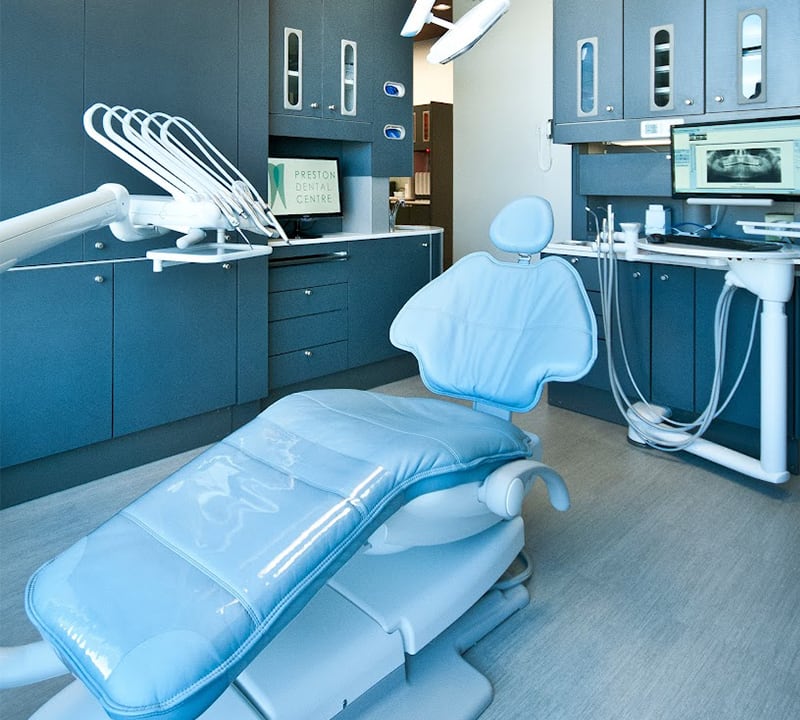
Technology at Our Dental Clinic
At Preston Dental Centre, the technology we use is designed to help us diagnose dental conditions and create treatment plans that are customized to your unique needs.
Using our range of X-ray and scanning devices, we will be able to get a better look at your oral health in ways that would not be possible with the naked eye. With the screens we have in our dental office, we are able to show you these scans and walk you through each step of your treatment journey.
Our goal is to help you feel confident and comfortable with your dental care plan. Dental technology helps us keep you fully informed from start to finish.
Digital X-Rays
Using digital sensors instead of traditional photographic film, digital X-rays are able to produce detailed computer-generated images. These can be used to assess teeth, gums, and other oral structures that our dentists cannot see otherwise. Additionally, digital X-rays use less radiation than traditional X-rays.
Panoramic X-Rays
A panoramic X-ray creates one single flat image of your entire mouth, representing the upper and lower jaw, temporomandibular joints, and the nasal and sinus structures. Panoramic X-rays are especially helpful when planning dentures, braces, extractions, or implants.
Intraoral Scanners
Using an optical scanning wand, your dentist is able to take a digital image of the inside of your mouth to create a digital model. This device allows your dentist to capture accurate data to create digital replicas of the hard and soft tissues of your mouth.
Cone Beam Cat Scan
Cone beam computed tomography (CBCT) is an X-ray machine that generates 3D images of dental structures, soft tissues, nerve paths and bone in the craniofacial region with a single scan. CBCT images allow for precise treatment planning, such as checking your airway for sleep apnea treatment.
VELscope®
The VELscope is an oral cancer screening device that helps your dentist identify abnormalities and diseases in your mouth, such as cancerous and pre-cancerous lesions. It utilizes fluorescence visualization technology and can be performed during routine exams in about two minutes.
